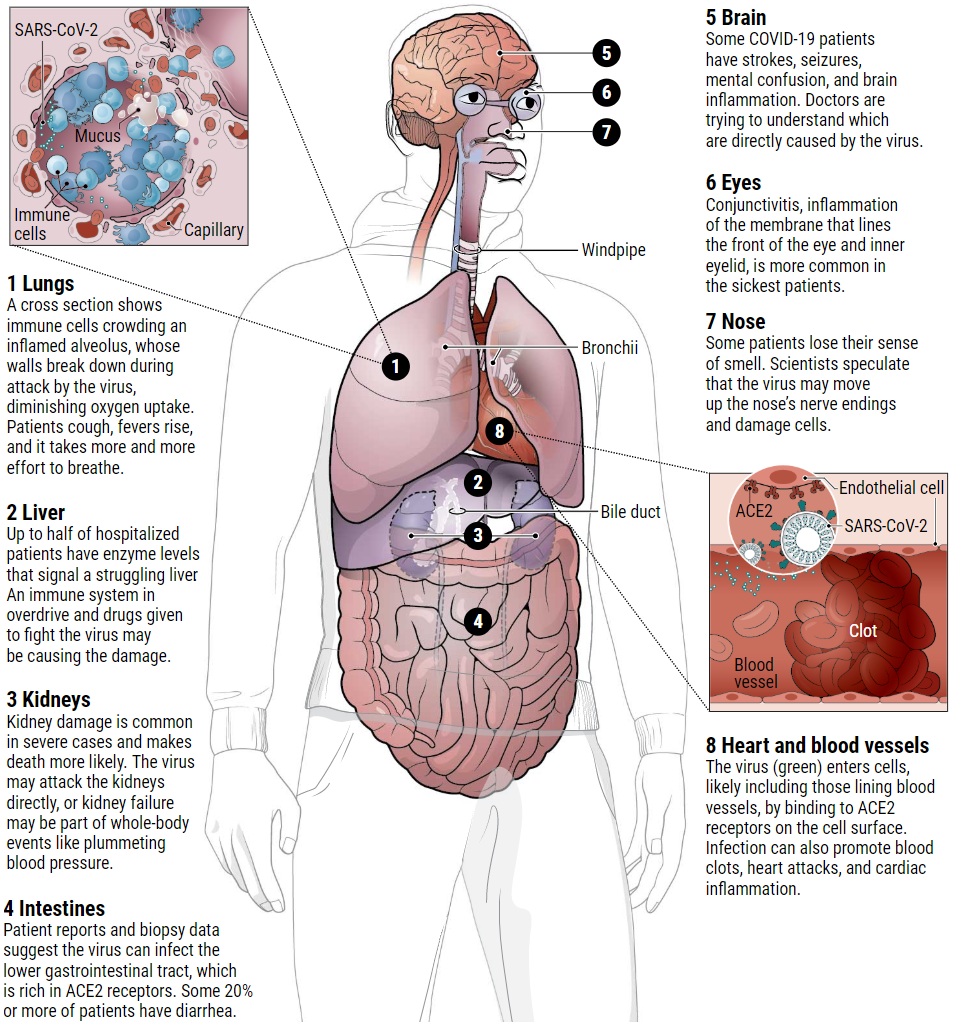每日外闻81
How does coronavirus kill? -8
冲击大脑2
但是其他因素可能会损害大脑。例如,细胞因子风暴可能导致脑部肿胀,而血液过度凝结的趋势可能引发中风。现在的挑战是,在工作人员专注于挽救生命的时候,甚至只是做一个简单的神经学评估(如诱发呕吐反射或运送患者进行脑部扫描)都有传播病毒的风险,而这种可能在以前只是一个猜测。
上个月,匹兹堡大学医学中心的神经病学家周雪莉(Sherry Chou)开始组织一个全球联盟,该联盟目前包括50个中心,从已经接受治疗的患者那里收集神经学数据。联盟早期的目标很简单:确定住院病人中神经并发症的发生率,并记录他们的情况。从长远来看,周和她的同事希望收集有关脑部扫描、实验室测试和其他的数据,以更好地了解病毒对包括大脑在内的神经系统的影响。
周推测了一种可能的入侵途径:病毒通过鼻子,然后向上并通过嗅球(解释了有研究报道所说的嗅觉丧失)—连接到大脑。“这是一个听起来不错的理论,”她说。“我们必须证明这一点。”
周补充说,大多数神经系统症状是“同事间的口口相传”。“我不认为任何人,当然也包括我,可以自称为专家。”
Buffeting the brain 2
But other factors could be damaging the brain. For example, a cytokine storm could cause brain swelling, and the blood’s exaggerated tendency to clot could trigger strokes. The challenge now is to shift from conjecture to confidence, at a time when staff are focused on saving lives, and even neurologic assessments like inducing the gag reflex or transporting patients for brain scans risk spreading the virus.
Last month, Sherry Chou, a neurologist at the University of Pittsburgh Medical Center, began to organize a worldwide consortium that now includes 50 centers to draw neurological data from care patients already receive. The early goals are simple: Identify the prevalence of neurologic complications in hospitalized patients and document how they fare. Longer term, Chou and her colleagues hope to gather scans, lab tests, and other data to better understand the virus’ impact on the nervous system, including the brain.
Chou speculates about a possible invasion route: through the nose, then upward and through the olfactory bulb—explaining reports of a loss of smell—which connects to the brain. “It’s a nice sounding theory,” she says. “We really have to go and prove that.”
Most neurological symptoms “are reported from colleague to colleague by word of mouth,” Chou adds. “I don’t think anybody, and certainly not me, can say we’re experts.”
See you tomorrow



